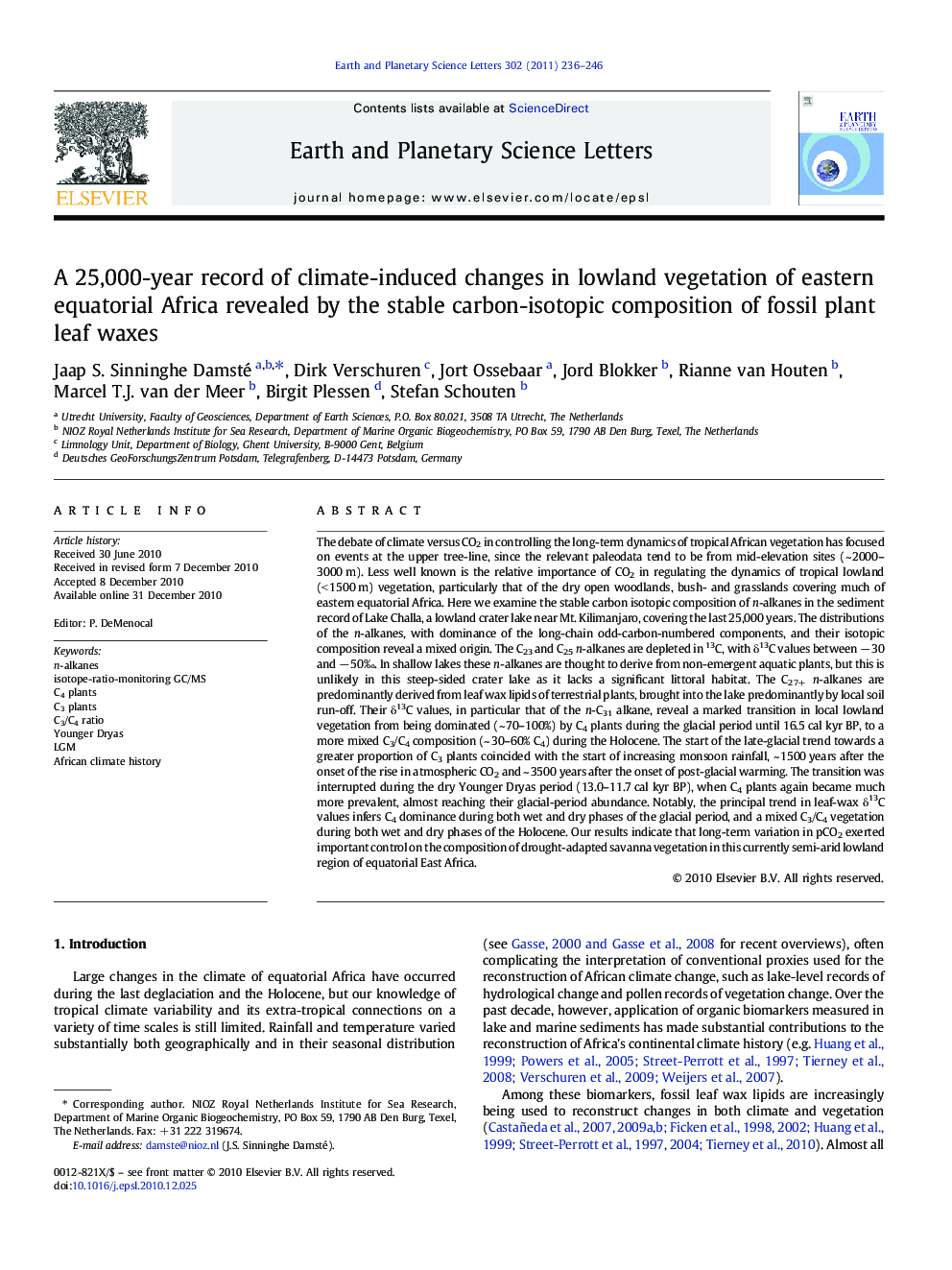| Article ID | Journal | Published Year | Pages | File Type |
|---|---|---|---|---|
| 6430793 | Earth and Planetary Science Letters | 2011 | 11 Pages |
The debate of climate versus CO2 in controlling the long-term dynamics of tropical African vegetation has focused on events at the upper tree-line, since the relevant paleodata tend to be from mid-elevation sites (~ 2000-3000 m). Less well known is the relative importance of CO2 in regulating the dynamics of tropical lowland (< 1500 m) vegetation, particularly that of the dry open woodlands, bush- and grasslands covering much of eastern equatorial Africa. Here we examine the stable carbon isotopic composition of n-alkanes in the sediment record of Lake Challa, a lowland crater lake near Mt. Kilimanjaro, covering the last 25,000 years. The distributions of the n-alkanes, with dominance of the long-chain odd-carbon-numbered components, and their isotopic composition reveal a mixed origin. The C23 and C25n-alkanes are depleted in 13C, with δ13C values between â 30 and â 50â°. In shallow lakes these n-alkanes are thought to derive from non-emergent aquatic plants, but this is unlikely in this steep-sided crater lake as it lacks a significant littoral habitat. The C27+n-alkanes are predominantly derived from leaf wax lipids of terrestrial plants, brought into the lake predominantly by local soil run-off. Their δ13C values, in particular that of the n-C31 alkane, reveal a marked transition in local lowland vegetation from being dominated (~ 70-100%) by C4 plants during the glacial period until 16.5 cal kyr BP, to a more mixed C3/C4 composition (~ 30-60% C4) during the Holocene. The start of the late-glacial trend towards a greater proportion of C3 plants coincided with the start of increasing monsoon rainfall, ~ 1500 years after the onset of the rise in atmospheric CO2 and ~ 3500 years after the onset of post-glacial warming. The transition was interrupted during the dry Younger Dryas period (13.0-11.7 cal kyr BP), when C4 plants again became much more prevalent, almost reaching their glacial-period abundance. Notably, the principal trend in leaf-wax δ13C values infers C4 dominance during both wet and dry phases of the glacial period, and a mixed C3/C4 vegetation during both wet and dry phases of the Holocene. Our results indicate that long-term variation in pCO2 exerted important control on the composition of drought-adapted savanna vegetation in this currently semi-arid lowland region of equatorial East Africa.
Research Highlights⺠Sedimentary δ13C of n-C31 of Lake Challa reveal a marked transition in lowland vegetation. ⺠C4 plants dominated in the glacial. ⺠A mixed C3/C4 composition occurred during the Holocene. ⺠During the dry Younger Dryas period C4 plants again became more prevalent. ⺠Long-term variation in pCO2 exerted important control on drought-adapted savanna vegetation.
